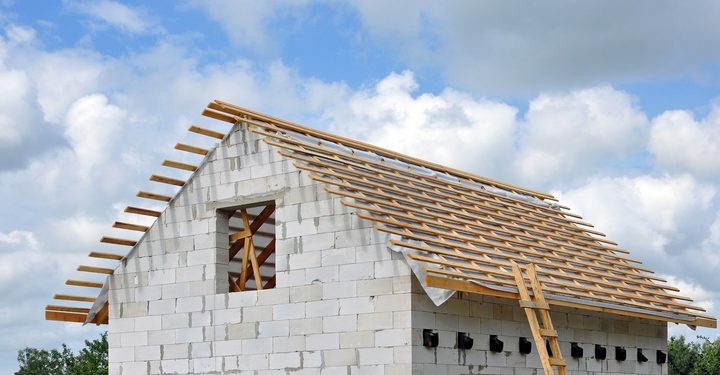9 Recent Construction Industry Trends and Insights

It is time to look into our crystal ball and see what the future has in store for one of the most laborious, lucrative, and underappreciated industries in the world: The construction sector. Known for its raw, sweaty, and dirty work, the construction industry can use a little bit of relief and assistance. Its wish is granted thanks to the rise of digital contractors, bricklaying robots, and wearable technology. In other words, new trends are coming to the industry and everybody should be excited.
Here are nine different construction industry trends and insights:
Trend #1. Digital Contractors

The construction industry is all about power tools, raw materials, and grueling human labour. But, thanks to the integration of business intelligence, big data, mobile technology, and cloud computing, digital contractors are becoming integral components to the construction sector. Not to mention the various construction management services and software on the open market.
While the primary need is for on-site contractors, there will be a ballooning need for digital contractors who will work with the various technologies. This is a great opportunity for young people who want to get into the trades sector but are not necessarily keen on holding a wrench and working in harsh weather conditions – subzero temperatures or the oppressive sun.
Trend #2. Big Data

Construction companies have access to astronomical amounts of data never seen before. Not only can they do they have these at their fingertips, but firms can also leverage the information to their advantage.
Indeed, these businesses have the option of hiring contractors or bringing on employees who can extract this data. Either way, using data analytical tools can enable construction companies – large and small – to collect, separate, and assess enormous volumes of data. Believe it or not, it is not that hard!
Trend #3. Drone Usage

Business news networks were ebullient a few years ago when they learned that real estate agents were using drones as part of their marketing efforts. By recording aerial footage, realtors had a better time showing the entire property to potential homebuyers. It is a great trick to have in your back pocket.
It turns out that this method is on the rise in the construction industry, too. For projects that are erecting buildings at a great height, drones can be great to compile footage, data, and other crucial information to correct mistakes or improve upon something or generate a new idea.
Whatever the case, drones are emerging as part of the popular construction industry trends. You will surely see more drones in the sky surrounding construction projects.
Trend #4. Mobile Construction Technology

Sure, smartphones and tablets already play an important part in the sector. But there are specific mobile construction technologies available to help make the project come under the budget or ensure the endeavour meets deadlines.
Here are some mobile construction technologies that will be big in the industry next year:
- Robots (bricklaying, for example)
- Autonomous heavy equipment (excavation or grading)
- Drones (see above)
Just don’t think these complementary tools will replace the human worker – the human element is still necessary for all these elements.
Trend #5. Improved Safety Equipment

Safety is of the utmost concern on any construction project. Any worksite can never have too many safety tools and equipment lying around. And, of course, you can never be too safe. That said, one of the biggest trends of 2020 and beyond is the improvement in safety equipment.
Wearables are being used by construction firms to monitor workers and their environment. This technology is starting to become embedded in the clothing of each employee to monitor posture, repetitive motions, and slips and falls. Smart clothing will keep an eye on skin temperature, respiration rate, and heart rates.
This will prove invaluable and lead to the question: “Where were you all my life?!”
Trend #6. Building Information Modeling

Do you want a tool that can boost effectiveness and enhance collaboration? Well, there is. It is called building information modeling, or BIM. This is a tool that produces computer representations of buildings, roads, utilities, and anything else the construction contractor has been hired to construct.
Like how wearables will be invaluable to workers, BIM will prove to be an incredible aide for management and supervisors because these models will better predict job costs, highlight what building materials are needed, and how these structures will withstand the test of time.
Here is what you get from BIM:
- Lower costs
- Faster building times
- Safe work environments
- Regulatory compliance
- Fewer safety incidents
Trend #7. Augmented Reality

There is all this talk of virtual reality, but the money will be in augmented reality, which is one of the emerging construction industry trends. This is when a computer-generated image is imposed on the individual’s view of the world. Again, this will serve as a remarkable assistant to every element of the job.
Trend #8. Rising Material Costs

Because trade disputes, protectionism, and tariffs will remain the order of the day heading into 2020 and beyond, raw material costs will soar. You’re going to be paying more for everything, from steel to concrete to aluminum. Until these international spats are resolved, material costs will only increase, which makes construction spending a lot more expensive.
Trend #9. Going Green

Finally, the construction industry trends will be greener than ever before. Being environmentally-friendly is pretty much a prerequisite these days, so anything else would be disappointing to any number of parties involved in this project, particularly if you are partnering with a government.
The construction industry has always been successful in integrating tools that are generally marketed toward consumers. But, seeing an opportunity, these manufacturers tailor their products to certain segments of the marketplace. In this case, since the construction industry is worth tens of billions of dollars, a whole host of companies make products specifically for construction.


